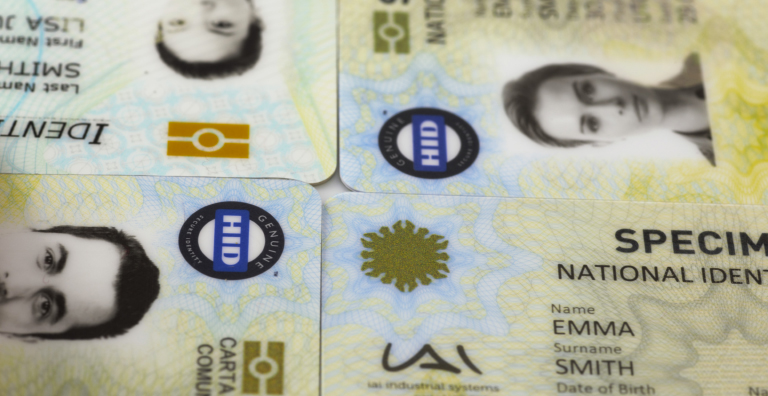Why an Identity Document Should Not Be Used for Payment
There have been a number of initiatives to add payment capabilities to ID cards (e.g., Nigeria and Maldives National ID cards), as well as programs where governments have stepped in to provide payment capabilities to their citizens (e.g., a fuel subsidy card in Egypt and digital cash in Ecuador).
Three Reasons Why the Combination of Identity and Payment Is Not an Attractive Solution
While the potential advantages of multiple-issuer cards have been appealing, the reality has proven less attractive. There are a number of reasons behind this, three of which are mentioned here:
- Card branding: The dominant brand on the card must be determined
- Unclear customer support: Replacing a card to fix a problem from one issuer has repercussions for the other issuers on that same card
- Different post-issuance life cycles: It is complex to replace, add, or update a service
Much better than identity cards, mobile wallet apps such as HID’s mobile identity solution goID™, can deliver all of the potential use cases along with benefits to all stakeholders, without many of the pitfalls.
Two Use Cases for Payment With ID
Identity documents are involved in a wide range of use cases but only two come to mind when in conjunction with payment:
- Age verification related to the purchase of restricted goods
For age verification, convergence is viewed negatively as it infringes upon privacy. If the government gains knowledge of an individual’s purchases of restricted goods (alcohol, cigarettes, adult videos, etc.) or access to restricted places (night clubs, bars, etc.), this information could be used to profile citizens. Even age discount purchases may lead to privacy issues as the ticket may reveal information that could be used to build an individual’s social profile, such as a destination or a specific social event to be attended. - Welfare distribution: A citizen may need to prove his or her identity in order to collect money
With regards to welfare, convergence brings value to the government. Under normal circumstances money is issued to citizens in lump sums, which citizens keep in their own accounts until they spend them. In the converged model, the money stays in the government’s pocket until it is spent by the citizens, which means that the government holds the money longer and can therefore accrue more interest. There is also an inclusion benefit for unbanked citizens who are given access to welfare, subsidies and other services.
Government Payment Solutions Aren’t Accepted Despite the Benefits
Governments who have tried to implement this model with their population (e.g., digital cash in Ecuador) have seen limited adoption not only because of privacy concerns (i.e., government as Big Brother), but also because households may want to share funds across separate accounts or simply because the proposed benefits to the citizen are never actually realized.
A cashless society is key for governments to save cost, reduce fraud and accordingly receive more tax money and promote inclusion. However, combining government identity schemes with payment cards has not proven to be the way forward as it is treated with suspicion by the population. Governments need to find other ways to promote inclusion, protect identities and privacy — all while ensuring welfare is distributed effectively where it is needed.
Read about how HID Global can support you on your next ID card solution project.
As Senior Product Marketing Manager, Fabrice is responsible for all topics surrounding the digitalization of citizen identity as well as mobile ID security. When he is not advising customers on how to roll out their digital identity programs, he regularly contributes to the development of international standards in several working groups dedicated to mobile identity and security such as ISO.
